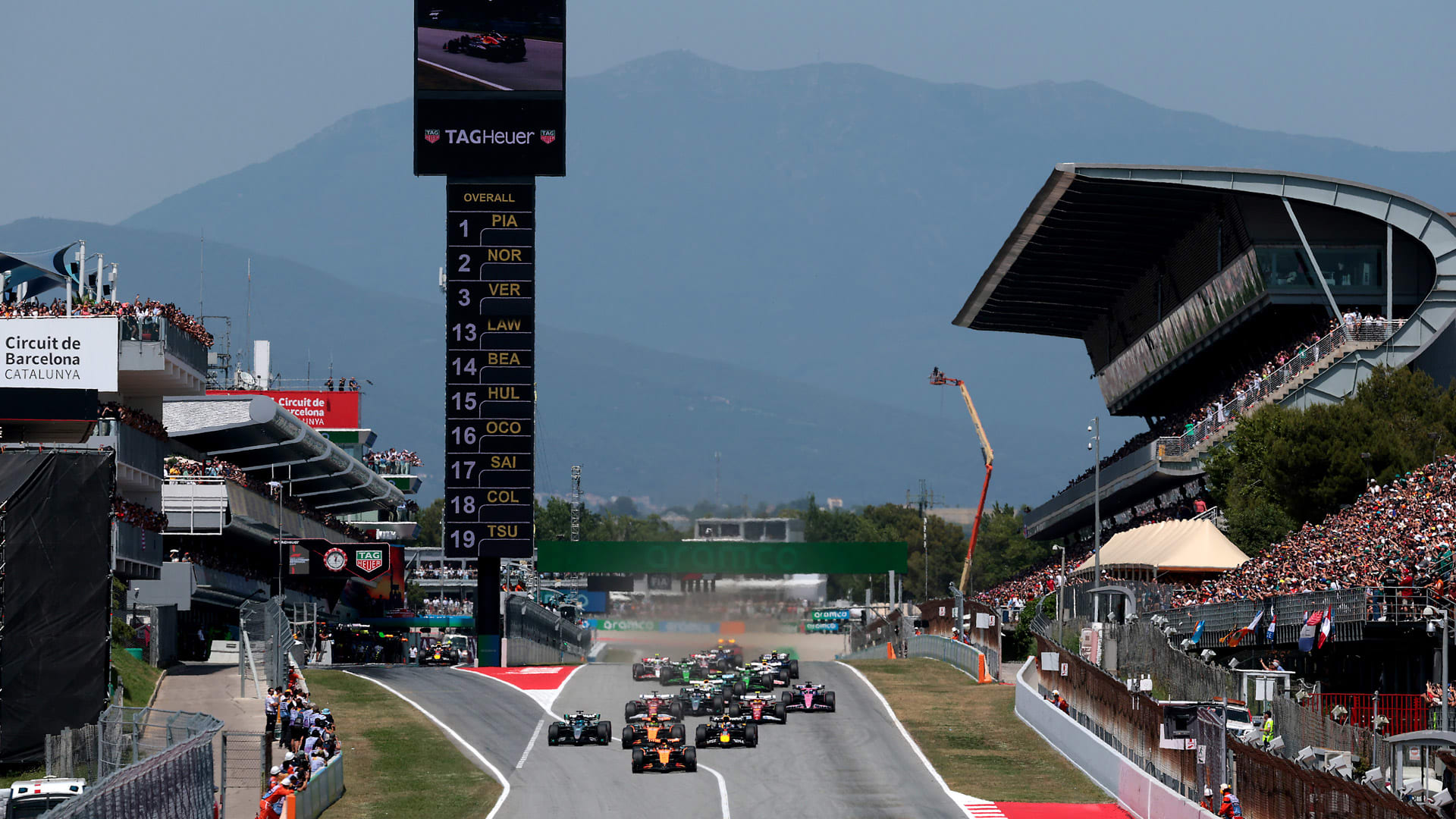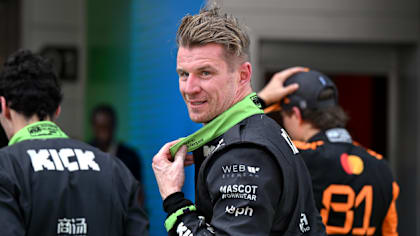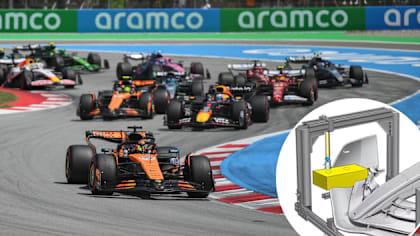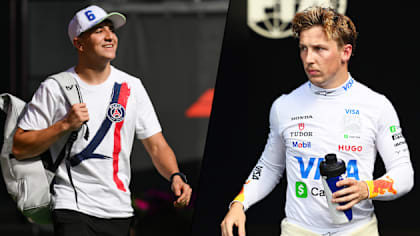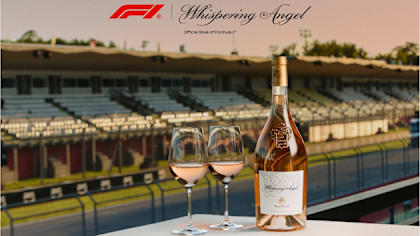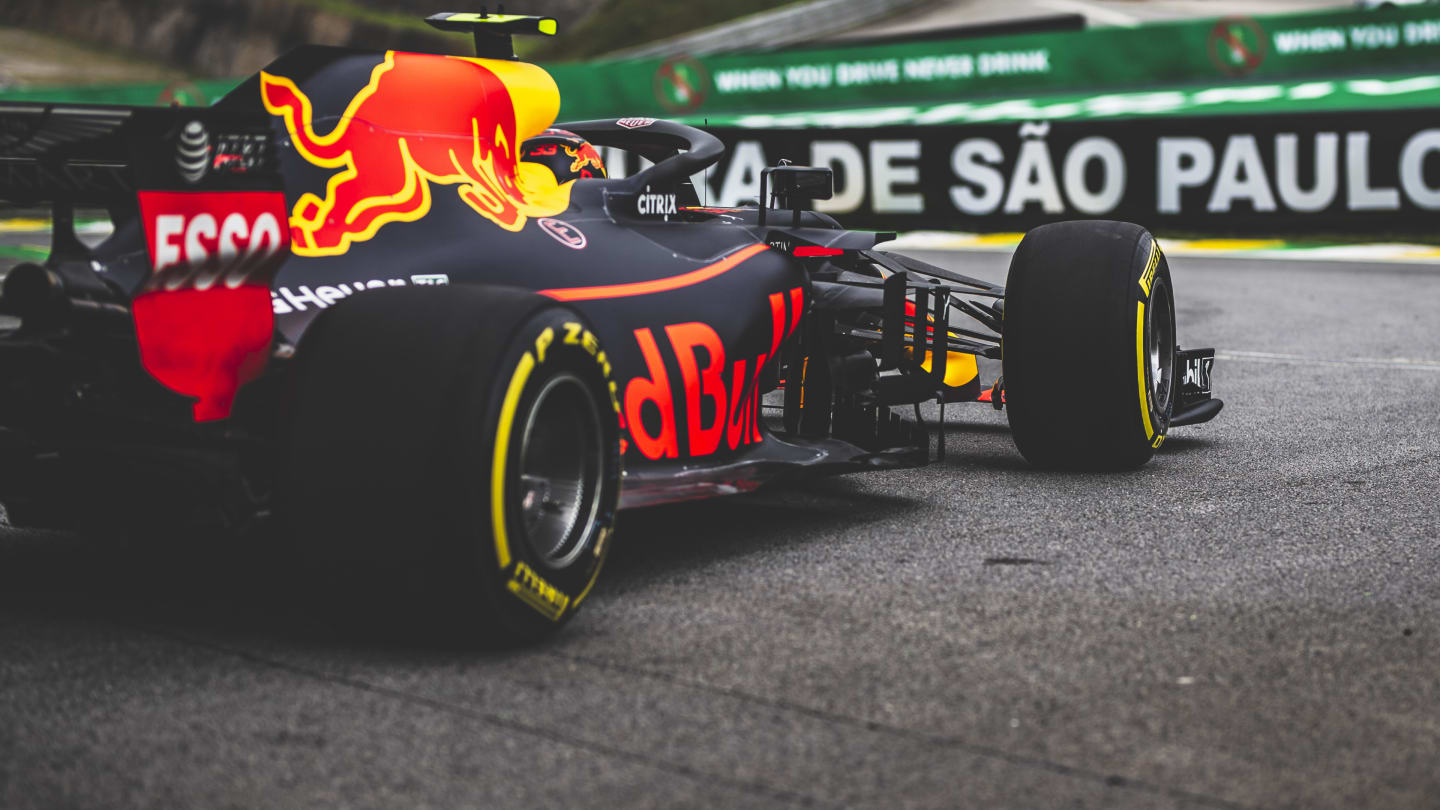
Technical
TECH TUESDAY: How kind-on-tyres Red Bull nearly handed Verstappen Brazil win

Share

Max Verstappen was interviewed on TV as he walked to his car on the Brazilian Grand Prix grid. Asked if he was going to win, he replied that a win was unrealistic from fifth but he was targeting the podium. Asked why a win was unrealistic, he reasoned that he wasn’t going to be able to pass four cars from two teams, because the teams could always use one car to delay him. Yet remarkably, he proceeded to pass all four of those cars on track, his Red Bull scything past the two Ferraris and two Mercedes to be in control of the race by half-distance. How was that even possible? It was to do with the black art of tyres. The Red Bull treated its rubber vastly better than the Mercedes or Ferrari and could run at a much harder pace without inducing blistering.
It’s absolutely vital that a tyre runs at the correct temperature – and that operating temperature window can be very narrow. If the tyre is too cool it will be rigid and gripless. Too hot and it will begin to melt and blister. That ‘goldilocks’ range is between around 100 and 140 degrees Celsius, depending on the compound. Formula 1 race engineers focus a huge amount of attention on getting the tyres into the appropriate window.
As Red Bull’s chief engineer Paul Monaghan explains: “What you are trying to do is get the tyres up to temperature quickly in qualifying and keep them there, but then not having that temperature punch through the roof in the race. It’s extremely difficult.”
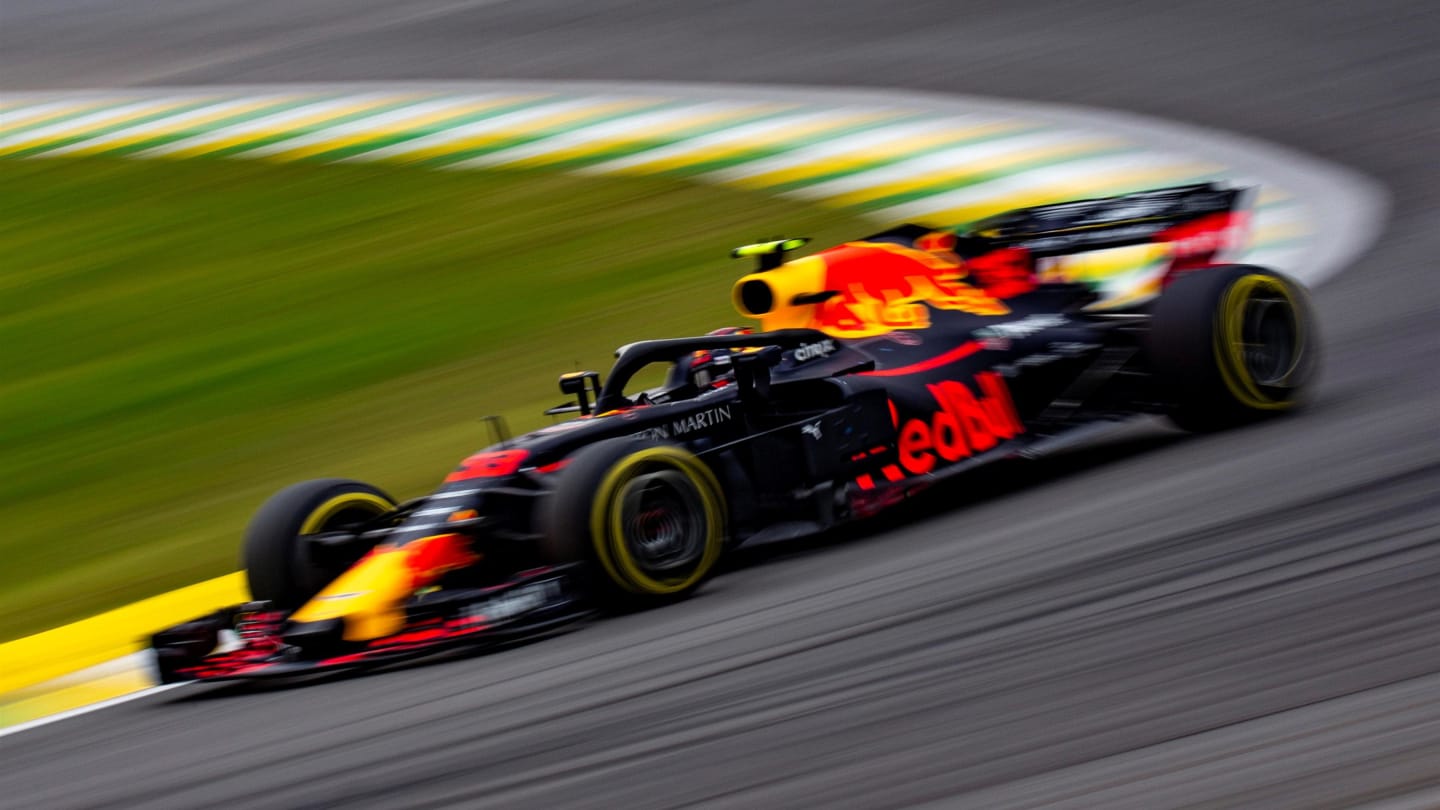
The tyre trying to pull itself back into shape through the corners provides grip
The tyre consists of a core carcass, sidewall and tread. The tyre’s elasticity is a critical part in it generating grip. As the tyre is loaded up it bends and it is its reaction against that, as it tries to pull itself back into shape, which creates the opposing force that gives the grip. This is determined partly by the tyre’s structure and partly by how the tread bonds chemically with the surface of the track. For the tread to bond properly and stick itself to the track requires that it is at the correct temperature.
If the tyre’s construction is not supportive enough, the tyre’s surface will be overwhelmed. Either the compound will not reach the critical threshold at which it begins to bond, or it will overheat and go beyond the upper threshold. The tyre’s core needs to be at the correct temperature to have enough elasticity in it that it can bend and thereby support the tread. So there are two crucial but inter-related temperatures. The tyre blankets applied before the car leaves the garage initiate this heating process through the sidewalls and tread. But they can only do part of the job and cannot penetrate deeply enough into the tyre’s core to give it the required all-round temperature. The job has to be completed by the car putting the tyre under load out on track.
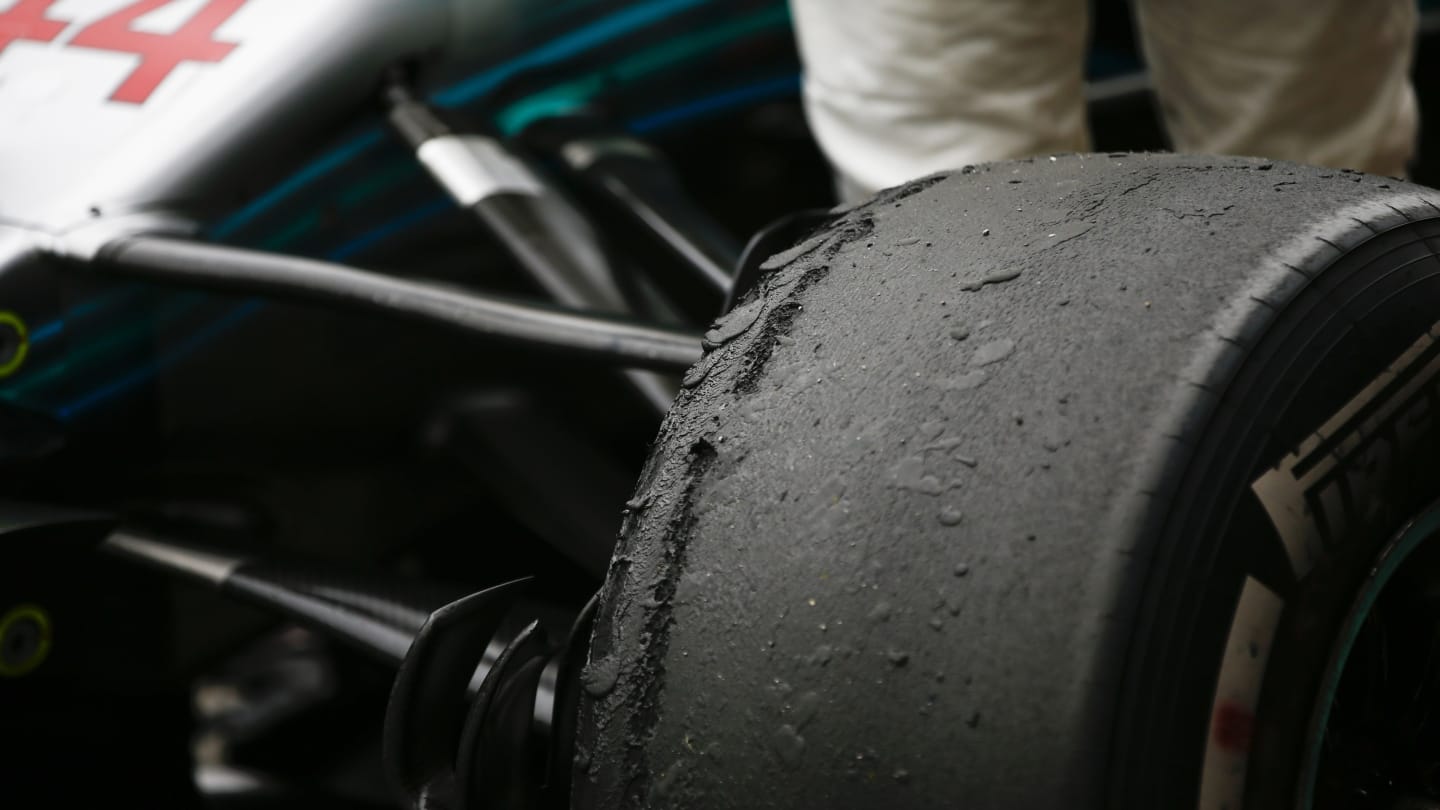
Mercedes' tyres did not look happy at the end of the Brazil race
It is important that the core and tread temperatures are evenly matched. If the core remains too cool and inflexible, it’s quite possible to overheat the tread which will mean very little grip is generated and therefore the core remains cool. So the whole process becomes a vicious cycle. Conversely, it is important that the compound is not too soft or hard for the demands of the track, otherwise its chemical bonding will either not be initiated fully or break down – and the resultant lack of cornering force will keep the core cool and inflexible.
Teams use the heat generated by the brakes and conduct it through the wheel rims to help generate tyre temperature. For qualifying, this is more critical for the fronts than the rears which can be brought up to temperature relatively easily because they are on the driven wheels. But generating the appropriate wheel rim temperature and keeping it from escalating after a few laps is a delicate balance – and hence the wheel rims have all sorts of cooling channels. The Mercedes rear wheel rim introduced in Spa is designed to act almost as an extractor fan, attempting to use the enhanced airflow to stabilise the rim temperatures.
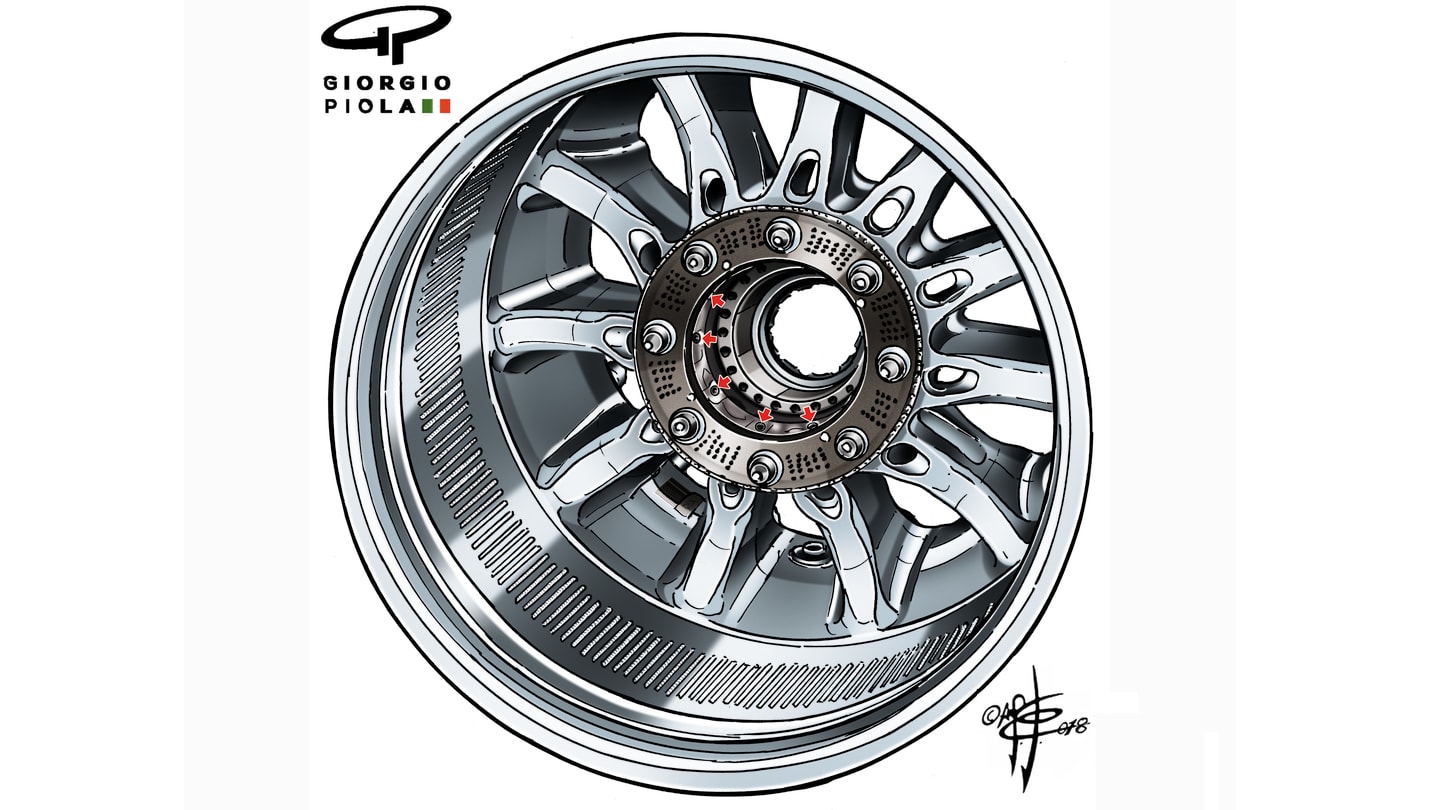
Mercedes’ clever wheel rims are designed to stabilise temperatures
If the rubber overheats it will blister. The blisters can be internal and initiated in the core – or on the tread surface. Often, blisters on the surface have initiated in the core. Typically, they will form in a circumferential line around the tyre, where it is running at its hottest. This could be seen very clearly in images in Brazil of the front and rear tyres of both Lewis Hamilton and Valtteri Bottas. The degree of camber and castor – as well as the steering geometry – play a key role in determining which section of the tyre’s width is under the most stress and generating the most heat.
Front blistering is generally not as serious a problem in the race as rear blistering, as it can be more readily controlled by the driver – though they are often interrelated, as explained by a Mercedes engineer. “Blistering appears because you exceed a temperature, so the driver knows he has to look after the tyres. If you get front blisters it looks bad but you can drive on and it doesn’t hurt you dramatically. Rear blistering can be disastrous, so what the driver is purposely trying to do the whole time is load the front up in order to save the rear. The rear obviously has so much energy going into it – it’s got a huge engine pushing it along, whereas the front doesn’t have that.”
The combination of track characteristics and compounds will determine how susceptible a tyre is to blistering, as will the traits of the car and how it’s being driven. On Sunday, the Red Bull was far less prone to blistering its tyres than the Mercedes or Ferrari – hence Verstappen was able to run his race at a much faster pace than their drivers. The difference in tyre usage between cars is rarely as stark as was apparent on Sunday, but that mechanism is always at play.
YOU MIGHT ALSO LIKE
News Hulkenberg reveals ‘golden ticket’ that helped him secure impressive P5 in Spanish GP
TechnicalF1 Unlocked TECH WEEKLY: How every F1 team reacted to the front wing flexing clampdown in Spain – and what changed on track
News Hadjar declares points run in Spain ‘a lot of fun’ as Racing Bulls team mate Lawson reflects on factor that ‘screwed’ him
News Whispering Angel announced as Official Rosé of Formula 1
